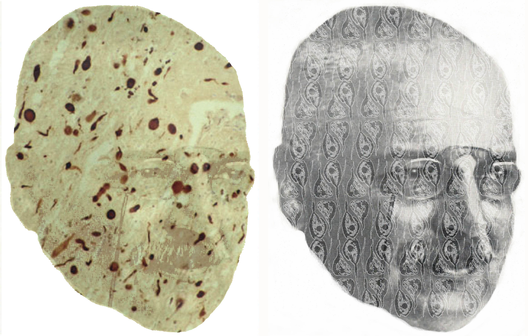Alois Alzheimer1864–1915
Alzheimer published his paper describing the abnormalities in the brain cells of his patient, Auguste D in 1907. The substance of Alzheimer’s report had been presented in a talk to psychiatrists given at the University of Tübingen in November of the previous year. Alzheimer’s name was associated with this type of neural degeneration in 1910. A remarkable aspect of the centenary celebrations is that Alzheimer’s original micrographs had been rediscovered a few years earlier. When Auguste D was examined by Alzheimer in 1901 there was clear evidence of her emotional and cognitive deficits which were also accompanied by auditory hallucinations. When she died, in 1906, Alzheimer was able to examine tissue from her brain and to describe the attendant abnormalities visible under the microscope. By that time Alzheimer was working in the Department of Psychiatry in Munich, under the direction of Kraepelin, who gave the name ‘Alzheimer’s disease’ to the condition. Kraepelin had worked with Wundt, and was a leading psychiatrist in Germany; his classification of mental disorders was widely adopted and it brought a considerable degree of order to their study. He was not unaware of the impact that linking a disorder to a worker in his clinic would have on its standing. In the century or so since Alzheimer’s report the incidence of the disease has increased and a vast amount of research on it has been conducted. In addition to the neural degeneration identified by Alzheimer, deficits in memory and cognitive functioning have received most attention; distortions of perception do occur but they are not as debilitating. Alzheimer himself died relatively young but his memory has been long lasting. His portrait is combined with the neurofibrillary plaques and tangles he found in micrographs of Auguste D’s brain cells.
